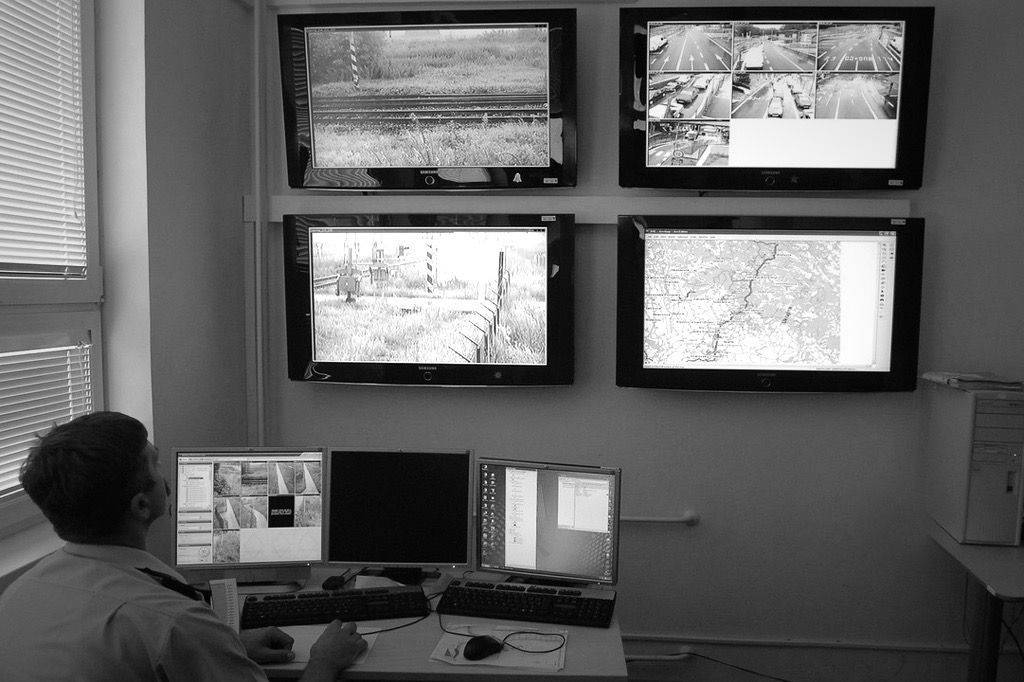After the so-called 2015 “refugees’ crisis”, the European Union and its Member States have given new impetus to the externalisation in border management and outsourcing of migration policies, accelerating a process of borders fragmentation with substantial consequences in terms of human rights violations and arbitrariness at the external frontiers. As pointed out by the debate on critical borders studies, borders are today less framed as geopolitical lines, but increasingly shaped by bordering practices designed to manage populations assuming that classifications and categorisations are no longer primarily territorially defined. Over the last years, this has resulted in the pre-eminence of policies based on containment and returns, favouring the criminalisation of irregular migration through an ever-growing suspicion towards non-pre-vetted travellers. The underlying aim seems indeed to control and deter potential migrants and asylum seekers – even before their departure – through a multi-layered and heterogeneous set of technologies and policies compelled between selecting and containing mobility, while removing jurisdictional constraints from Europe (Moreno-Lax, Giuffré, 2017). Behind the fight against irregular migration, the result is the impossibility for asylum seekers and people in need of international protection to reach the EU’s territory, have their application accessed on individual basis or start administrative procedures.
All these policies and practices fall under the definition of “pushbacks” and can be broadly understood as all the measures that produce a violation of the principle of non-refoulement, i.e. the right not to be removed, expelled or extradited to a State where there is a severe risk of being subjected to death penalty, torture and other inhuman or degrading treatments. Despite non-refoulement is widely accepted as a peremptory norm of international law and is deeply rooted both in the European Union law and in the Member States national law, pushbacks are a largely documented phenomenon at every level of the EU borderwork. First of all, they systematically take place at the external borders of the Union, often with violent and degrading methods. According to the Fundamental Rights Agency, in 2019 Greece pushed 58.283 persons back to Turkey, with similar situations occurring between Croatia and Bosnia-Herzegovina, Hungary and Romania, Poland and Belarus, Bulgaria and Turkey, Spain and Morocco (FRA, 2020), proving how this widespread phenomenon is integrated into national policies (PACE, 2019). Secondly, similar events occur at sea in the form of pullbacks – through a higher degree of outsourcing and with the direct involvement of third States’ authorities – often as part of Member States’ policies generally supported by the EU: this is the case of a relevant part of the activities conducted by the Libyan Coast Guard.
Noteworthily, pushbacks occur differently depending on the “typology” of border where they are performed: not only at the borders of the Member States and on third countries’ territory, but – I suggest – also within the framework of the so-called “smart borders”. Although not discussed in the literature, the possible development rejections should at least be taken into account also at the digital level of the border management, a privileged and less visible area for new forms of containment to be experimented. The EU Member States, indeed, focus increasingly on new technologies to carry out “smart” border controls, connecting the growing number of interrelated networks while sharing or combining huge amounts of data to preventively anticipate what may happen. According to Didier Bigo, digital borders generate «data-banned populations» that – on the bases of statistical analysis – are denied individual assessment because people with similar profiles have previously been expelled (Bigo, 2014). I argue that new forms of “digital refoulement” might emerge not only because of the risks posed by illegitimate data-sharing with third State authorities or non-State actors, but also because the information gathered with big data analysis allows to locate migrants before their arrival and can be used to streamline forms of pushbacks, preventing the examination of individual protection claims. However, unlike pushbacks and pullbacks – characterized by a direct or outsourced contact between migrants and security forces – digital refoulement could be better described by borrowing from physics the notion of backscatter, defining the reflection of waves, particles, or signals back in the direction from which they come. In fact, at the digital borders level, rejections seem resulting from a diffused reflection enforced by a system of interconnected databases, filters and dams that make the violation of non-refoulement less palpable in its single operative phases.
The smart borders’ assemblage develops at least on three levels: on EU Member States’ territories, in third countries’ territory and in the pre-frontier area, notably with the European Border Surveillance System (EUROSUR). At the EU level, major concerns are posed by the interoperability initiative between biographic and biometrical databases and information systems deployed both at and before the border. Alarms have been raised primarily in terms of data protection, access to a due process and possible illegal discriminatory outcomes caused by the growing role of algorithmic decisions at the border. Working on big data at high speed and real-time traceability, in fact, smart borders change guise depending on who is attempting to cross them. Borders’ filtration functions are not per se negative nor neutral but result from specific choices: they govern different populations in different ways, consolidating a hiatus between trusted and untrusted travellers. Furthermore, risk assessments – at the core of smart border surveillance – legitimate suspicion against specific groups simply by categorizing them, anticipating risk from previous trends and generalizing each individual’s potential behaviour (FRA, 2016; State Watch, 2020). This is a prerequisite for a shift from a reactive to a pre-emptive approach: it is about uncertainty and probability, not about rights. These surveillance mechanisms might indeed endorse processes of selective disempowerment that could lead to the denial of protection, notably because weak anti-discrimination safeguards are foreseen by the legislation. Moreover, a violation of non-refoulement cannot be excluded, especially in cases of migrants’ physical impossibility or refuse to provide biometrical data. Accounting smart borders in third countries, it is remarkable that the EU and its Member States are supporting the expansion of biometrical technologies in African States.
For instance, in Niger – one of the most important strategic countries for migration toward Europe – since 2018 the Migration Information and Data Analysis System (MIDAS) transfers fingerprints and facial images to a central database in Niamey for identification, authentication and data analysis purposes. MIDAS – developed by IOM in 2009 – was introduced in the country thanks to Japanese founding and relevant technical and economic support provided by the EU (Zandonini, 2019). The system contributes to the risk-analysis cells set up by Frontex: what might seem alarming is that the existing monitoring mechanisms for compliance on human rights standards have quite a few holes in terms of effectiveness and could result in indirect forms of containment or unlawful data-sharing. However, evidence on the issue has not been assessed in depth and wider research seems necessary to verify whether MIDAS and similar systems hide risks of digital refoulement, possibly involving the European Union.

Finally, it is interesting to focus on the surveillance of the pre-frontier area, taking place largely thanks to EUROSUR. Its intelligence-driven approach diverges from a patrolling strategy and is centred on interoperability and sorting of heterogeneous data in «close-to-real time». EUROSUR basically establishes a common framework for the exchange of information and the cooperation between the EU Member States and Frontex: it consists of national hubs connected through a secure communication network and merged by Frontex’s Fusion Services in a “system of systems”. Its all-in-one mandate is to support the Member States in reaching full situational awareness at their external borders and to increase their reaction capability in contrasting irregular immigration while protecting migrants’ lives. In practice, EUROSUR works visualising maps that are understood as operational areas. With the information gathered by radars, drones, satellites and sensor systems, EUROSUR generates the European Situational Picture (ESP) and the Common Pre-frontier Intelligence Picture (CPIP), under Frontex’s responsibility. They both include three main different layers of data: operational information on patrolling assets, analytical data as intelligence reports or risk ratings and information on events and incidents occurring at and before the external border (SAR operations, presumed unauthorised entries, cross-border crimes, etc.; FRA, 2018).
The situational pictures are the foremost tools for making decisions: for this reason, the processes of categorisation and risk assessment rank different border events on the basis of their specific governability. Irregular cross-border activities can indeed be considered more or less risky depending on their expected impact, taking for example into account the ease of returns and the probability of dealing with potential asylum-seekers (Tazzioli, Walters, 2016). The CPIP is also relevant for its implications on refoulement issues. It shapes the pre-frontier area not simply as a geographical space, but as a network of cooperation and interoperability that potentially support pre-emptive actions based on virtual suspicion. The paradox is that the reaction capability enhanced by the CPIP triggers the expectation that actions must be taken, even if their legal basis is not obvious at all. This approach defines border policies in terms of potential flows – regardless of territorial demarcations – and, focusing on general patterns or routes, fosters an idea of migration that goes beyond individual rights. Furthermore, Frontex has no mandate to deal with individual persons at external borders, nor to interfere with any asylum procedure. For this reason, it refuses to collect personal information: its focus is the «suspicious constellations» (Ellebrecht, 2019) assembled with information from the pre-frontier area.
It can be argued that processes of profiling and categorisation instead of identification strategically remove the conditions to claim accountability: the lack of personal data leads to people being pre-emptively kept out, caught in a vague but pervasive process of backscattering. In conclusion, politics of non-entrée and pre-frontier controls – within a preventive and future-oriented approach – apparently do not incorporate enough guarantees for people in need of protection and represent a further source of vulnerability (Nagore Casas, 2019). Digital refoulement may be less visible than direct refoulement, but the degree of potential harm does not change substantially: a thorough reflection on these evolving bordering practices seems urgent.
References
Bigo, Didier (2014), “The (in)securitization practices of the three universes of EU border control: Military/Navy – border guards/police – database analysts”, Security Dialogue, vol.3, n.45, pp.209-225;
Ellebrecht, Sabrina (2019), “Mediated Bordering Eurosur, the Refugee Boat, and the Construction of an External EU Border”, Transcript;
FRA – European Union Agency for Fundamental Rights (2016), “Under watchful eyes: biometrics, EU IT systems and fundamental rights”;
FRA – European Union Agency for Fundamental Rights (2018), “How the Eurosur Regulation affects fundamental rights”;
FRA – European Union Agency for Fundamental Rights (2020), “Migration: key fundamental rights concerns, 1.10.2019 31.12.2019”;
Moreno-Lax, Violeta, Giuffré, Mariagiulia (2017), The Rise of Consensual Containment: From ‘Contactless Control’ to ‘Contactless Responsibility’ for Forced Migration Flows, in Juss Singh, Satvinder (eds.), “Research Handbook on International Refugee Law”, Edward Elgar;
Nagore Casas, Maria (2019), “The Instruments of Pre-border Control in the EU: A New Source of Vulnerability for Asylum Seekers?”, Paix et Sécurité Internationales, n.7;
PACE – Parliamentary Assembly of the Council of Europe (2019), “Pushback policies and practice in Council of Europe member States”, Doc. 14909, published on 08/06/2019;
State Watch (2020), “Automated Suspicion. The EU’s New Travel Surveillance Initiatives”, published in July 2020;
Tazzioli, Martina, Walters, William (2016), “The Sight of Migration: Governmentality, Visibility and Europe’s Contested Borders”, Global Society, vol.30, n.3.
Zandonini, Giacomo (2019), “Biometrics: The new frontier of EU migration policy in Niger”, The New Humanitarian,published on 06/06/2019.
Acknowledgements
Cover photo: Three men head north toward Algeria on foot after crossing the Assamaka border post in northern Niger on June 3, 2018. (Jerome Delay/AP)

